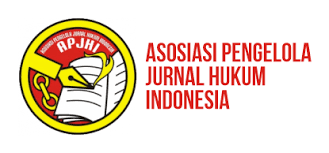TAFSIR MAQĀŞID DENGAN PENDEKATAN GENDER TERHADAP AYAT-AYAT HUKUM KELUARGA
DOI:
https://doi.org/10.15642/al-hukama.2017.7.2.1-31Keywords:
MaqÄÈ™id Interpretation, Social Interpretation, Family’s Law, The Gender AnalysisAbstract
This research focuses on rediscovering the verses about the establishment of the family law and the events or the reason of the revelation of the verses. It is then analyzed within the frame of maqÄÅŸid and gender approach. The verses can be classified into 3 areas, among others; (a) family law verses starting from marriage to separation either due to death or divorce, (b) the guardianship law verses of the immature child; (c) verses of family wealth law (amwÄl al-usrah) which includes inheritance, wasiyat, endowment and everything related to acceptance and or giving. The usage of maqÄÅŸid and gender perspectives are based on chapter al-RÅ«m (30): 21; that marriage rules are aimed to building a harmonious family, which spawns a loving relationship between husband and wife, and compassion among their children. The harmony is awakened through close relationship among husband, wife, and children who are able to fulfill their rights and obligations of each with full of love and affection. Each has the ability to control such rights and obligations freely and proportionately.
Downloads
References
----------. Interpreting the Qur’ân: Interpreting The Qur’an: Toward a Contemporary Approach, London and New York: Roudledge, 2006.
AlÄ’ al-DÄ«n al Mardawi. al-InshÄf, t.t.: DÄr al-IhyÄ’ al-TurÄth al Arabiy, 1986, dalam Abdullah Saeed, Al-Qur’an Abad 21.
Ali bin Abu Å¢Älib k.w.Al-Zuhayly. al-Fiqh al-IslÄmy wa adillatuh, jilid. X.
Al-Dhahabi. al-Tafsīr wa al-Mufassirūn, t.t.: t.p.,1976, juz 1.
Hazairin. Hendak Kemana Hukum Islam, Jakarta: Tintamas, 1976.
---------. Hukum Kewarisan Bilateral menurut Qur’an dan Hadith, Jakarta: Penerbit Tintamas, 1982.
Ibnu ‘AshÅ«r. al-TahrÄ«r wa al-TanwÄ«r, Tunis: DÄr Sahnun li al-Nashr wa al-Tawzī’, t.th., II.
M.RashÄ«d RidÄ. TafsÄ«r al-Qur’Än al-Hakm/al-MannÄr, Beirut: DÄr al-Kutub al-Ilmiyah, 2005, jilid 4.
Mansour Fakih. Analisis Gender dan Transformasi Sosial, Yogyakarta: Pustaka Pelajar, 1999.
Muhammad Abduh. dan Muhammad Rasyid Ridla. Tafsir al-ManÄr, Juz IV. (Bairut: DÄr al-Fikr), IV.
Muhammad Abu Zahrah. al-AhwÄl al-ShakhÅŸiyah, t.t.: DÄr al-Fikr al-Arabiy. T.th..
Muhammad Shahrūr, Islam dan Iman : Aturan-aturan Pokok, terj. Sabrur R. Soenardi Yogyakarta: Jendela, 2002.
Muhammad Shahrur. Prinsip Dan Dasar Hermeneutika Hukum Islam Kontemporer tjm. Sahiron Syamsuddin. tjm. Sahiron Syamsuddin dan Burhanuddin Dzikri. Yogyakarta: Penerbit eLSAQ Press.
Nasr Hamid Abu Zayd. DawÄir al-KhaÅ«f. Beirut: al-Markaz al-ThaqÄfi al-‘Arabiy, t.t..
Nasr Hamid Abu Zayd. DawÄir al-Khauf: QirÄah fÄ« KhiÅ£Äb al-Mar’ah. (Beirut: al-Markaz al-Thaqafiy al-arabiy, 2000) atau Dekontruksi Geneder Krtik Wacana Perempuan dalam Islam, Tjm.Moch.Nur Ichwan, Yogyakarta: SAMHA Press. 2003.
Qamaruddin Shaleh. A.A.Dahlan, M.D.Dahlan, Asbabun Nuzul, Latar Belakang Historis Turunnya ayat-ayat alQur’an, Bandung: C.V. Diponegoro, t.th.
Al-Razi. TafsÄ«r al-RÄzÄ«, (t.t.: http://www.altafsir.com, t.th.), juz. XI.
Wahbah al-Zuhayly. al-Fiqh al-IslÄm wa Adillatuh, Beirut: DÄr al-Fikr, 2004.
Departemen Agama RI. Al-Qur’an dan Terjemahnya,
Downloads
Published
How to Cite
Issue
Section
License
Licensing
© The Author(s). Published by Prodi Hukum Keluarga Islam Fakultas Syariah Dan Hukum Uin Sunan Ampel Surabaya, Indonesia.
This is an Open Access article distributed under the terms of Attribution-NonCommercial 4.0 International (CC BY-NC 4.0).








